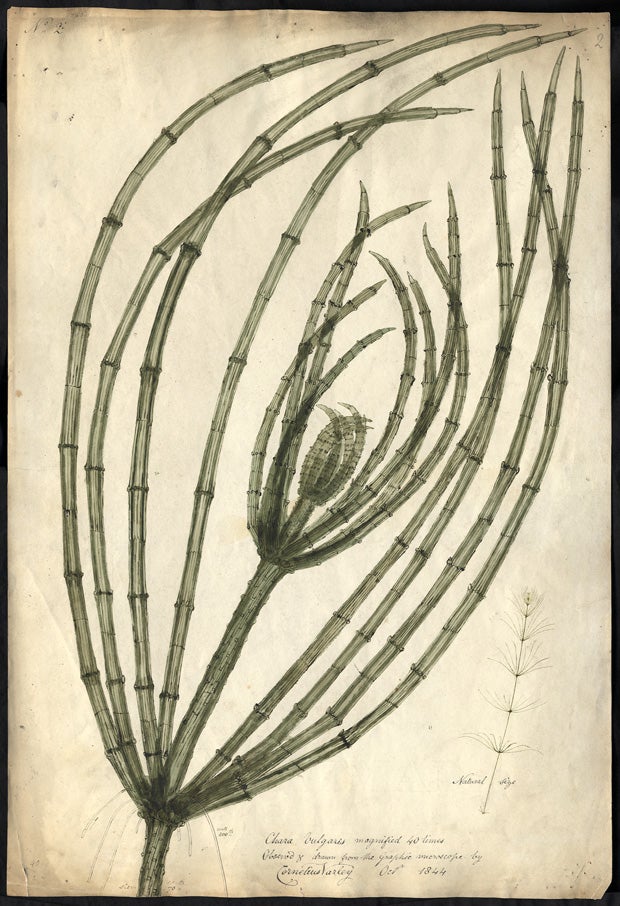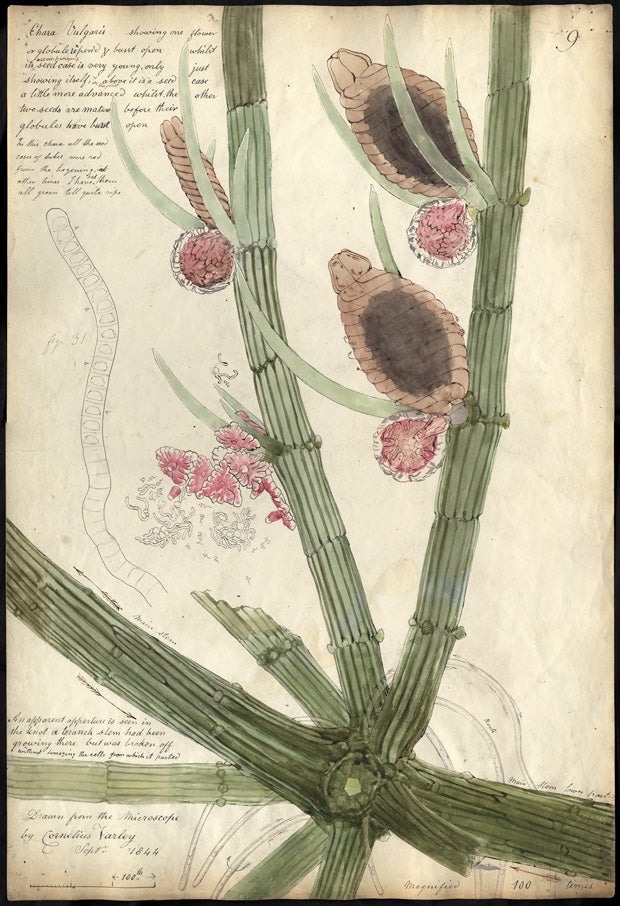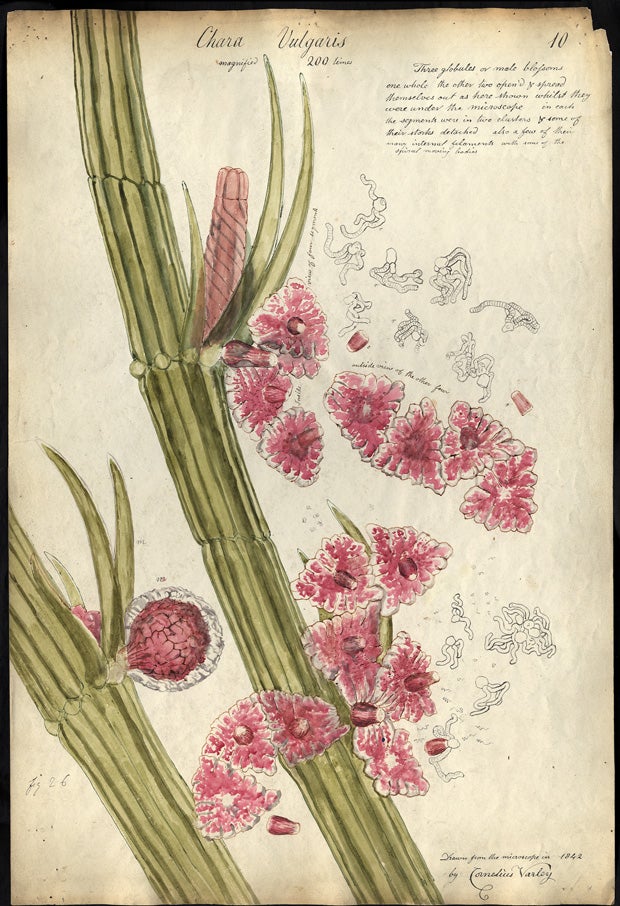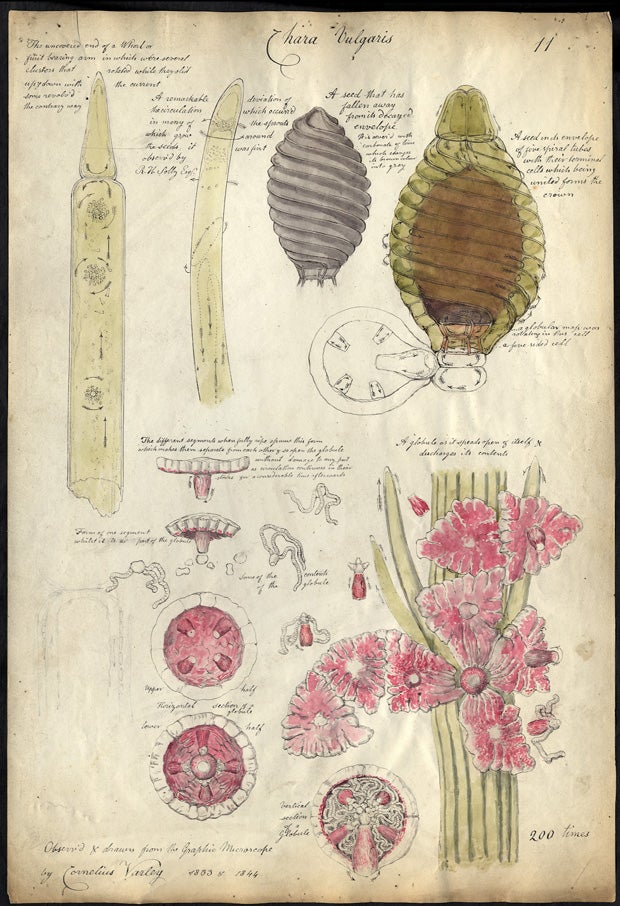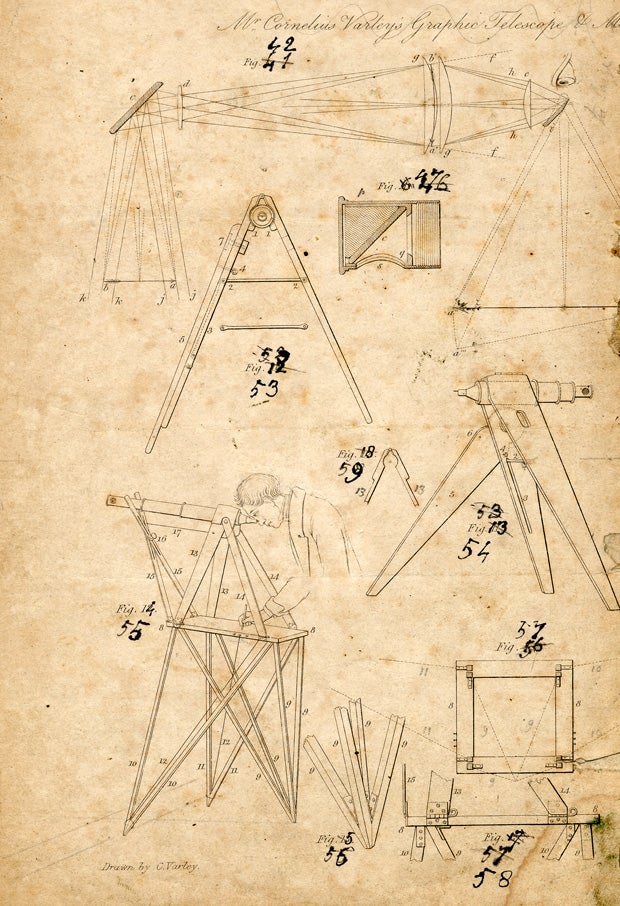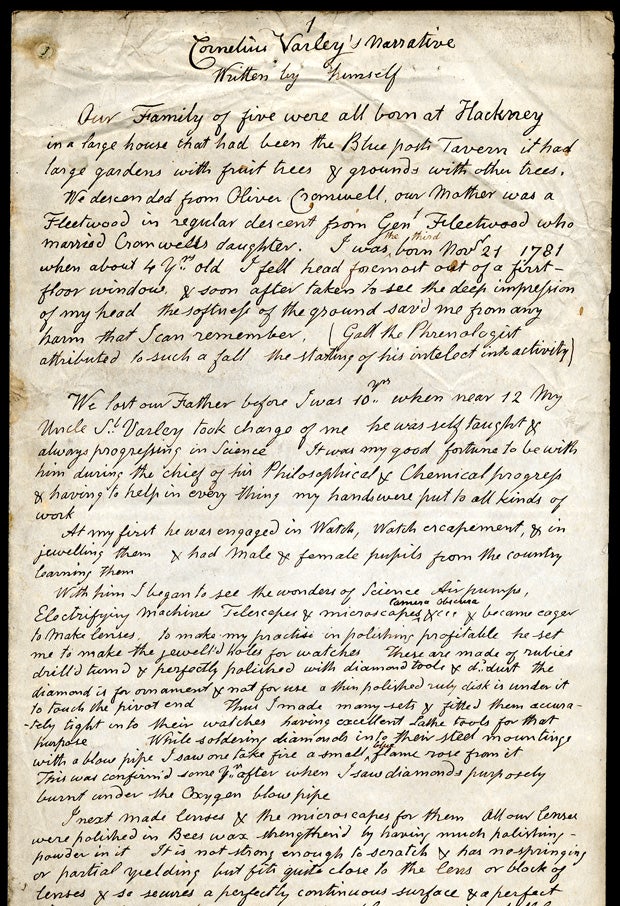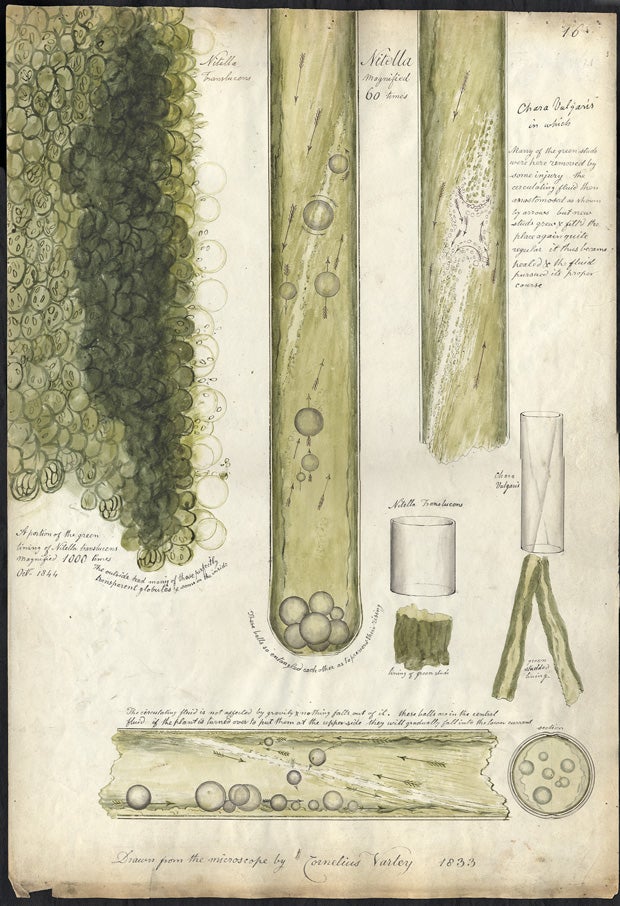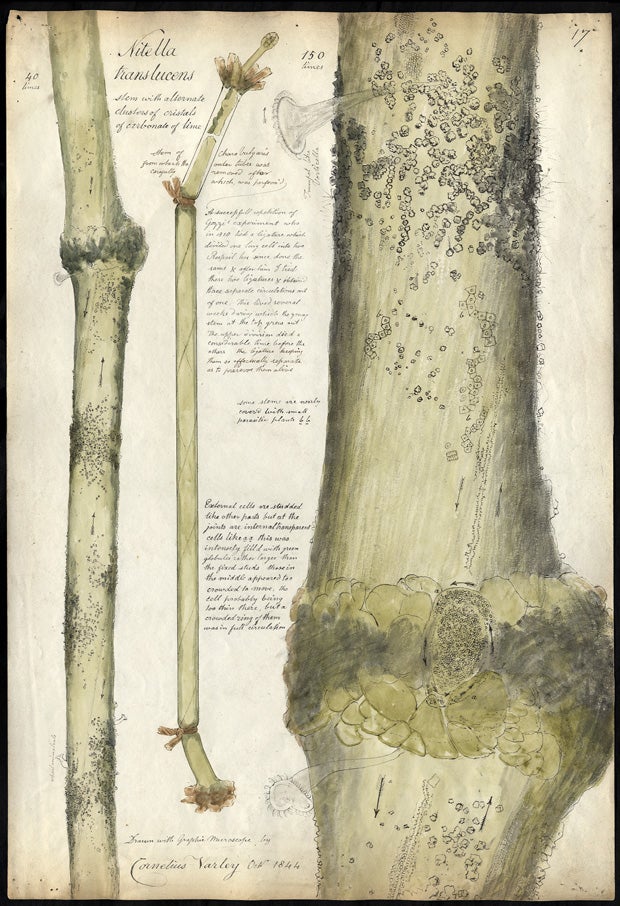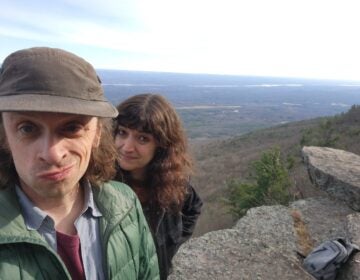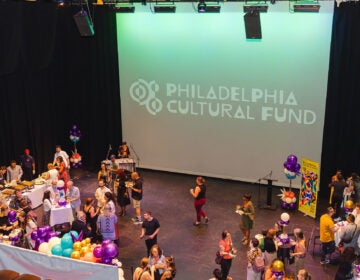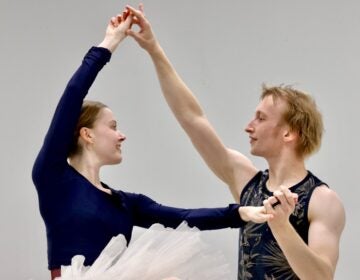Cornelius Varley and his Fantastical Patent Graphic Telescope Machine
Art — Produced by Michael O’Reilly
When Lewis Carroll sent Alice down the rabbit hole, he imagined a drink that would make her smaller than a mouse and a cake that would extend her body to the size of “the largest telescope that ever was.” Through the Looking Lens at the American Philosophical Society Museum (through December 29 2013) highlights stunning, never before seen watercolors by British artist/inventor Cornelius Varley (1781-1873) that range from vast panoramas rendered small to microscopic algae writ large. But unlike the enchantments of Carroll’s imagination, Varley’s wondrous images were of real things. He captured them before the advent of photography, using drawing instruments he invented, along with optical lenses he crafted and employed with great skill. Varley is known as an artist, but this exhibition is the first ever to showcase him as the inventor and maker of drawing instruments integral to his artistic and scientific practices. Through the Looking Lens reveals the full breadth of Varley’s work at the intersection of art and science. Similar to many early APS members in the 18th and 19th centuries—polymaths such as Benjamin Franklin, Benjamin Smith Barton, David Rittenhouse, and Alexander Bache—Varley effortlessly traversed the boundaries of multiple disciplines, propelled by his enormous inquisitiveness.
Text courtesy of The American Philosophical Society
For information about this and other upcoming events, visit www.apsmuseum.org/events
Web Extra: Varley’s Marvelous Invention: Using the Patent Graphic Telescope
In 1811, British scientist and artist Cornelius Varley patented a curious device. With the aid of his Patent Graphic Telescope, Varley was able to make beautiful, detailed drawings and watercolors of objects small and large like never before. Brent Wahl, an artist and lecturer at University of Pennsylvania gives a demonstration of Varley’s invention in Independence Square using a replica of the original housed at the American Philosophical Society. — Edited by Will Standish
Through the Looking Lens
Video © 2013 APS Museum
WHYY is your source for fact-based, in-depth journalism and information. As a nonprofit organization, we rely on financial support from readers like you. Please give today.


